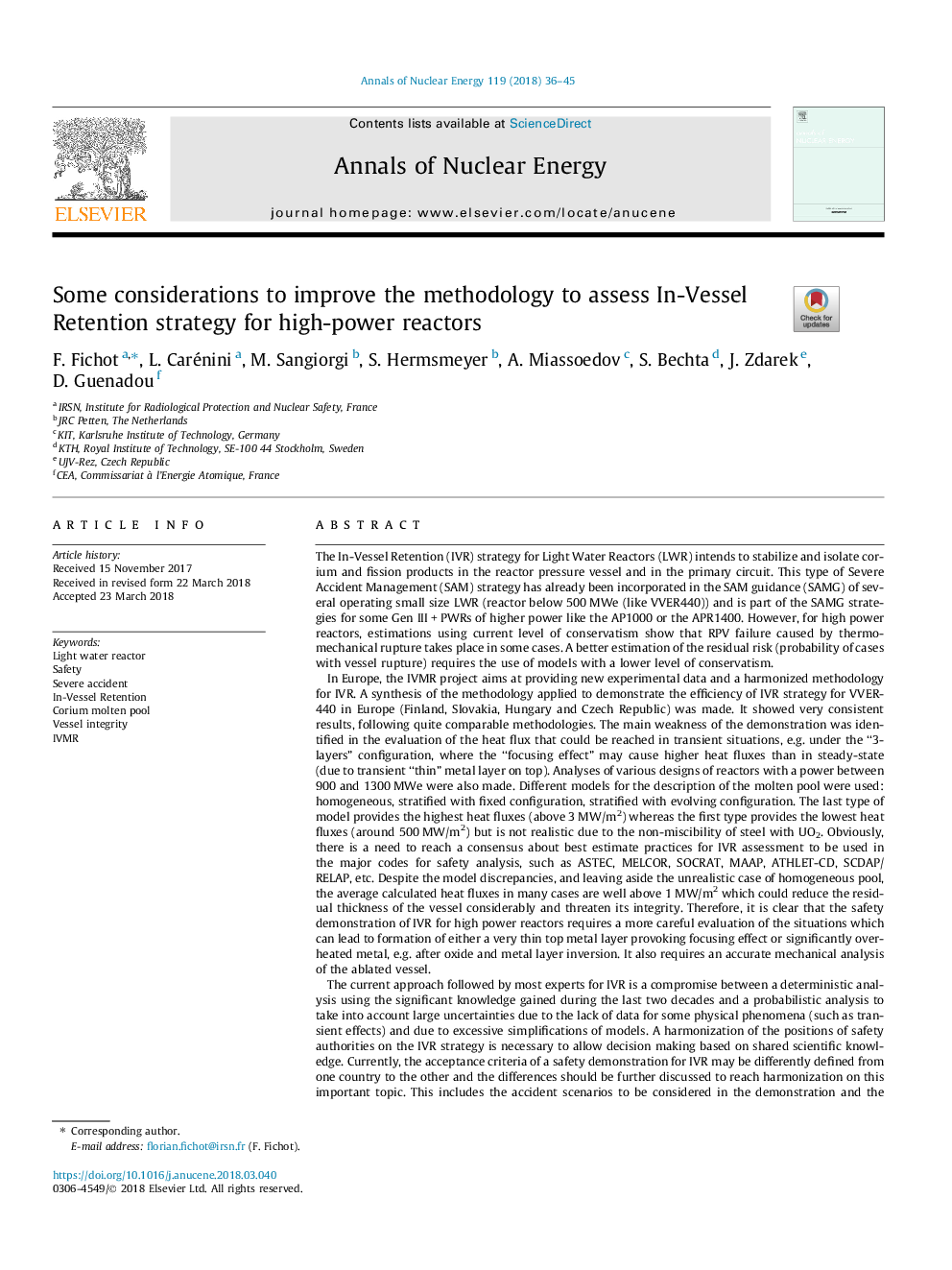| Article ID | Journal | Published Year | Pages | File Type |
|---|---|---|---|---|
| 8066905 | Annals of Nuclear Energy | 2018 | 10 Pages |
Abstract
The current approach followed by most experts for IVR is a compromise between a deterministic analysis using the significant knowledge gained during the last two decades and a probabilistic analysis to take into account large uncertainties due to the lack of data for some physical phenomena (such as transient effects) and due to excessive simplifications of models. A harmonization of the positions of safety authorities on the IVR strategy is necessary to allow decision making based on shared scientific knowledge. Currently, the acceptance criteria of a safety demonstration for IVR may be differently defined from one country to the other and the differences should be further discussed to reach harmonization on this important topic. This includes the accident scenarios to be considered in the demonstration and the modelling of the phenomena in the vessel. Such harmonization is one of the goals of IVMR project. A revised methodology is proposed, where the safety criterion is based not only on a comparison of the heat flux and the Critical Heat Flux (CHF) profiles as in current approaches but also on the minimum vessel thickness reached after ablation and the maximum integral loads that is applied to the vessel during the transient. The main advantage of this revised criterion is in consideration of both steady-state and transient loads on the RPV. Another advantage is that this criterion may be used in both probabilistic and deterministic approaches, whereas the current approaches are mostly deterministic (with deterministic calculations used only for estimates of uncertainty ranges of input parameters).
Related Topics
Physical Sciences and Engineering
Energy
Energy Engineering and Power Technology
Authors
F. Fichot, L. Carénini, M. Sangiorgi, S. Hermsmeyer, A. Miassoedov, S. Bechta, J. Zdarek, D. Guenadou,
